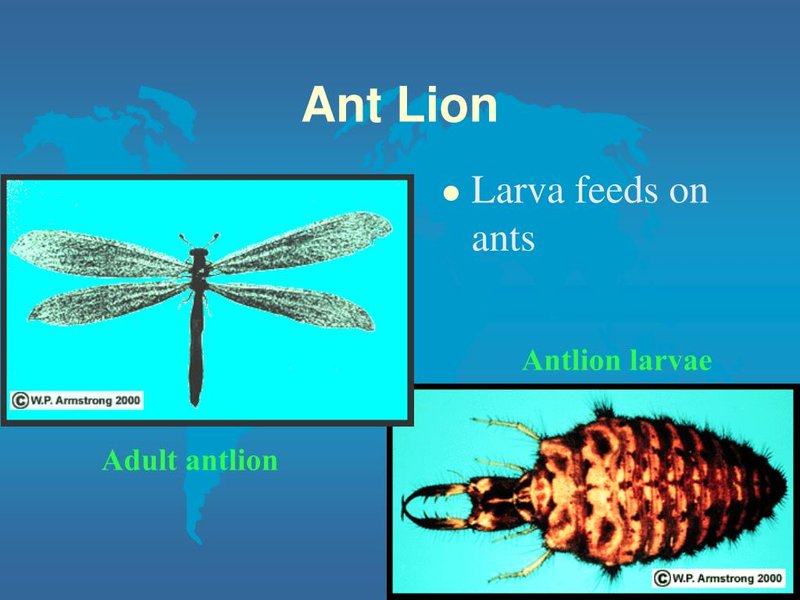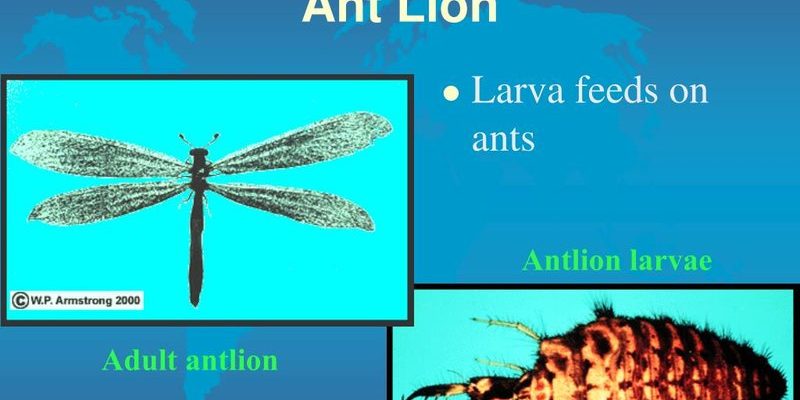
Ant lion larvae are the larval stage of a family of insects known as Myrmeleontidae. During this phase, they spend most of their time lurking in their sand pits, waiting for unsuspecting prey to wander too close. It’s a deadly game of patience that showcases nature’s raw elegance. So, let’s dive into the nitty-gritty of how these larvae feed, and together we’ll uncover the mechanics behind their captivating hunting style.
What are Ant Lion Larvae?
To understand the feeding mechanism of ant lion larvae, we first need to grasp what they actually are. Ant lions start their lives as eggs laid in sandy or loose soil. Once hatched, they become these crafty little predators with a voracious appetite. Their bodies are elongated and are often camouflaged to blend in with their environment.
These larvae are often mistaken for other insects due to their unique appearance. They have large jaws, which they use to grab onto their prey. Their ability to create traps not only helps them catch food but also serves as a defense mechanism against potential threats. They’re like nature’s little warriors, ready for battle without ever having to chase after their meals.
You might be wondering why they’re called ant lions. It’s simply because their favorite snack is ants. Picture a lion stalking a herd of zebras—this is how ant lions position themselves to catch ants and other small insects.
Building the Perfect Trap
Now, here’s where it gets interesting! Ant lion larvae create their traps in sandy areas by burrowing into the ground. Using their powerful jaws, they scoot around in a circular motion, throwing sand out of the pit and creating a conical shape. The sides of the trap are steep, making it hard for prey to escape once they fall in.
Once the trap is built, the ant lion hides at the bottom, waiting patiently. If you’ve ever tried to catch a ball with a net, you can visualize how they ‘catch’ ants—when an ant stumbles into the trap, it slides down to the bottom where the ant lion is ready to strike.
What’s fascinating about this process is how it showcases a perfect blend of engineering and strategy. The ant lion’s trap doesn’t just symbolize its home; it’s like a fishing net, designed meticulously to ensure it can snag prey effectively.
How Do They Catch Their Prey?
When an unsuspecting ant strolls too close to the edge of the pit, it often loses its footing and tumbles into the trap. Here’s the thing: once the ant lands in the sand, it’s not just a matter of being trapped. The ant lion quickly senses the vibration of the struggling ant and springs into action.
Like a skilled hunter, the ant lion will thrust its jaws forward, grabbing the ant and injecting it with digestive juices. These enzymes break down the ant’s insides, turning it into a nutritious soup. It’s a gruesome but effective method—one that ensures the ant lion gets the nourishment it needs to grow and eventually pupate into an adult.
The speed and efficiency of this feeding mechanism highlight how well-adapted ant lion larvae are for their environment. They’ve perfected a strategy that works beautifully in their sandy habitats.
Survival Tactics Beyond the Trap
While the trap is the most well-known method of capturing prey, ant lions have some other tricks up their sleeves, too. If a potential meal does manage to escape their pit, the ant lion can quickly rebuild the trap in a different spot. This adaptability ensures they can continue to hunt even if their original location becomes less fruitful.
Some species of ant lion larvae have also been observed using chemical cues to attract ants. They might produce a scent that mimics food, luring ants into their traps. It’s a clever twist, showing how resourceful these creatures can be.
You might think of these tactics as advanced hunting skills. It’s almost like they’re playing both offense and defense, ensuring they can continue to thrive in a world filled with predators and competition.
The Importance of Ant Lion Larvae in Their Ecosystem
Ant lion larvae play a vital role in their ecosystem, mainly as predators. Their hunting habits help control ant populations. You see, ants can be quite numerous, and without natural predators like ant lions, they could easily overrun an area.
Beyond their role as hunters, ant lion larvae also serve as food for other animals. Birds, larger insects, and even small mammals view them as a tasty treat. In a way, they’re a bridge in the food web, helping to sustain various species while keeping the ecosystem balanced.
Interestingly, their unique feeding mechanism and life cycle also make them a subject of scientific interest. Researchers study ant lions to better understand predator-prey dynamics, ecology, and how species adapt to their environments. Their life stages offer insights into evolution and environmental interactions.
Challenges Faced by Ant Lion Larvae
Despite being well-adapted predators, ant lion larvae face several challenges in the wild. Environmental changes, like habitat destruction or severe weather conditions, can affect their survival. For instance, if their sandy habitats are disturbed, it can hinder their ability to build traps effectively.
Another major threat comes from pesticides and other chemicals used in pest control. These substances don’t just target the pests; they can also harm beneficial insects like ant lions. This highlights the importance of using eco-friendly methods whenever possible.
You might be curious about how we can help maintain their populations. Supporting local ecosystems, promoting organic gardening, and being mindful of chemical usage are great ways to protect these unique creatures and ensure they continue to thrive in their natural habitats.
In summary, the feeding mechanism of ant lion larvae is a remarkable example of nature’s creativity. From building intricate traps to swiftly catching their meals, these little predators have developed a strategy that is both effective and efficient. Their role in the ecosystem as both predator and prey enriches the natural world, creating a balance that’s essential for life.
Next time you come across one of those sandy pits, you’ll know just what’s happening beneath the surface. Ant lion larvae may seem small, but they play a big role in their environments. By understanding their feeding habits and the challenges they face, we can appreciate these fascinating creatures even more. Who knew that something as simple as a sandy pit could hold such complex systems of life?

